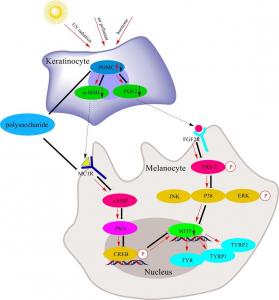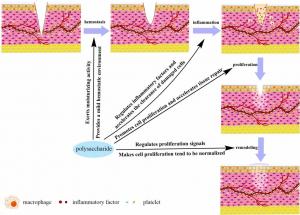USA, April 15, 2024 /EINPresswire.com/ — In this review, the potential relationship between the structure and activity of polysaccharides was summarized by analyzing the influence of physical and chemical properties of polysaccharides, such as extraction method, molecular weight, monosaccharide composition, functional group and structural modification, etc., which laid a foundation for the analysis of the structure-activity relationship of polysaccharides and improved its cosmetic value.
With the increasing application of natural ingredients in the cosmetics industry, the beneficial properties of natural polysaccharides have been effectively harnessed. Certain polysaccharides exhibit superior moisturizing capabilities compared to hyaluronic acid, while others demonstrate whitening effects equivalent to arbutin. As such, the application and development of some polysaccharides are expected to replace some artificial and expensive traditional cosmetics.
In a recent review (https://doi.org/10.1016/j.jdsct.2024.100004) published in the Journal of Dermatologic Science and Cosmetic Technology, a team of researchers from Inner Mongolia University and The Sorbonne University of France the biological mechanisms underlying the cosmetic properties of polysaccharides, including moisturizing, whitening, anti-aging, and skin repair.
“Due to the complex macromolecular structure of polysaccharides, they often contain multiple active fragments, which can promote various activities through distinct pathways,” says corresponding author Yongmin Zhang. “Factors such as molecular weight, monosaccharide composition and functional groups impact their cosmetic efficacy, with optimal results achieved when these structural parameters are controlled within specific ranges.”
Moreover, the authors noted that the properties of polysaccharides can be fine-tuned by adjusting extraction methods and using polysaccharide modification techniques to enhance their cosmetic activity.
“Currently, the research on the mechanism of activity may not be comprehensive, needing further study on the monosaccharides, functional groups and structural fragments with the highest activity among polysaccharides,” adds Zhang. “Understanding how the highly active polysaccharide binds to the receptor and finally acts on the cell, is important. This knowledge will enable the matching of regulated polysaccharide structures with aesthetic activity detection.”
The authors concluded that by identifying the most effective structural units of polysaccharides in exerting aesthetic activity, the cosmetic efficacy may be maximized, potentially further enhancing the application value of polysaccharides in the cosmetics industry.
DOI
10.1016/j.jdsct.2024.100004
Original Source URL
https://doi.org/10.1016/j.jdsct.2024.100004
Journal
Journal of Dermatologic Science and Cosmetic Technology
Lucy Wang
BioDesign Research
email us here
![]()
Originally published at https://www.einpresswire.com/article/703757270/recent-advances-in-application-of-polysaccharides-in-cosmetics
The post Recent advances in application of polysaccharides in cosmetics first appeared on Beauty Ring Magazine.
Beauty - Beauty Ring Magazine originally published at Beauty - Beauty Ring Magazine





